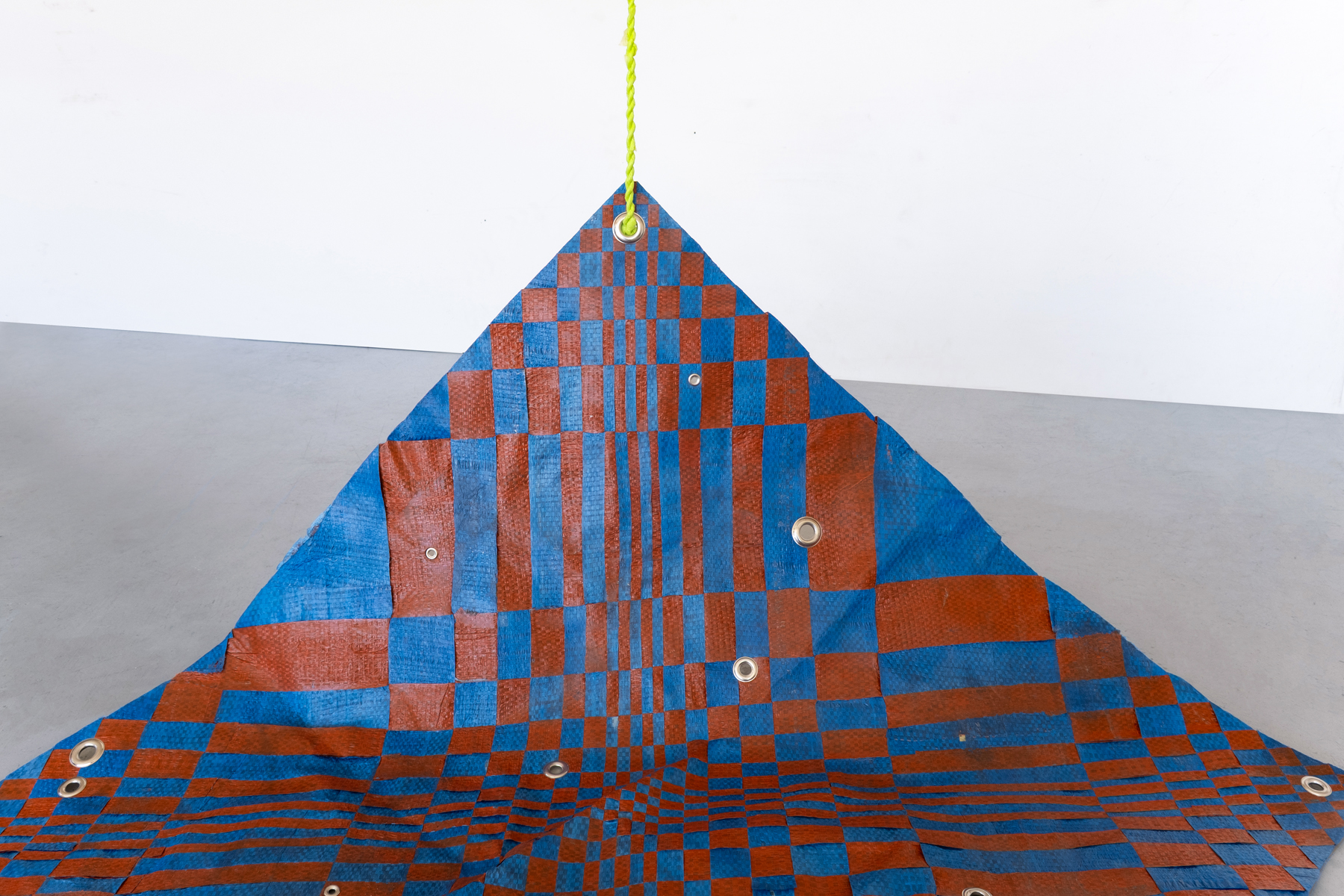Pasalubong #19
2025
~ 32" x 64"
Handwoven Tarpaulin, Grommets, Plastic Bag Cordage







Pasalubong #19 (Bagyo) reflects on the double-edged persistence of traditional knowledge and craft in the face of ongoing instability—economic, environmental, and political. Made from blue and orange tarp—a material linked to displacement and temporary shelter—it’s woven in an oblique binakol, a pattern not normally applied to banig or palm weaving—its superstitious optical illusions evoking storms or whirlwinds once meant to ward off harm. This banig inspired work embodies the creative adaptation people are forced to take up to navigate the forces—natural and man-made—that shape life in the Philippines today.
The work gestures toward the increasing frequency of storms, typhoons and floods impacting local communities and the state’s continued failure to respond with foresight and preparation. Rather than invest in environmentally-realistic, people-centered disaster risk reduction, the government enables and profits off of ecologically destructive development: land reclamation, luxury resorts, coastal displacement. Those most affected by the aftermaths of development aggression are left to endure—often without support, and too often, being blamed for the conditions they have no choice but to endure.
Still, weaving continues. Across the islands, the craft of banig holds space for survival, memory, and care. When disaster halts daily life, weaving offers continuity—income, grounding, and solace. In times of crisis, banig are sent not just for rest, but as quiet gestures of connection. Throughout the diaspora, they endure as poignant symbols of home.
The work’s woven strips speak of entanglement—with each other, with land and sea, with histories we inherit, and futures we must be resolute to shape. At the heart of Pasalubong #19 (Bagyo) are simple but urgent questions: What does protection look like today? Why is the resilience of the Filipino people in the face of disaster glorified? Who in our society bears the brunt of climate crisis and for whom are governmental infrastructure projects actually initiated?